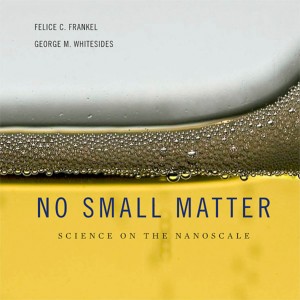According to a July 6, 2013 news item on Nanowerk, nanoremediation is not the right term for referring to pollution cleanup technologies that are nanotechnology-enabled,
In the remediation of pollutions in the soil and groundwater, minute nanoparticles are being increasingly used that are to convert resp. break down pollutants on site. The process, often somewhat mistakenly described as “nano-remediation”, can also be used with contaminations that have been hard to fight up to now, for example through heavy metals or the notorious, carcinogenic softener PCB. Yet how do the various nanoparticles behave in the earth, are they in turn harmless for humans and the environment and how can they be produced at a favourable price? These questions were investigated by scientists from the Research Facility for Subsurface Remediation (VEGAS) of the University of Stuttgart together with 27 partners from 13 countries in the framework of EU project “NanoRem”, planned to last four years. For this purpose the European Union is providing around 10.5 million Euros from the 7th research framework programme.
The July 6, 2013 news item on Nanotechnology Now (ordinarily, I’d quote from the University of Stuttgart press release which originated the Nanowerk and Nanotechnology Now news items but the university’s website seems to be experiencing technical problems) provides more details about treating pollution with ‘nanotechnology-enabled’ techniques and more information about NanoRem,
Nanotechnologies are particularly suited for treating groundwater aquifers but also contaminated soil at the site of the contamination (in situ). However, in remediation projects (reclamation of contaminated sites), they have only been used hesitantly since an effective and reliable application is not yet mature, the potential risks for the environment difficult to assess and nano-remediation in addition comparatively expensive due to the still high manufacturing costs of nanoparticles. The nanotechnology, however, offers advantages: compared to the classic remediation processes, such as “Pump & Treat” (pumping off contaminated groundwater and cleaning it in a treatment plant) or chemical, resp. microbiological in-situ remediation processes, the range of “treatable” contaminants is greater. In addition, a quick and targeted break down of pollutants can be achieved, for example also in industrial buildings without the production being interrupted. “Through nanotechnology we are expecting a significant improvement in the remediation service and the operational areas”, according to the Stuttgart coordinator Dr. Hans-Peter Koschitzky. This would not only be beneficial for the environment but would also be attractive from an economical point of view: the world market for the application of environmental nanotechnologies was estimated to be a total of six billion US Dollars in 2010.
Against this background the scientists involved in NanoRem want to develop practical, efficient, safe and economical nanotechnologies for in-situ remediation with the aim of enabling a commercial use as well as a spread of the application in Europe. The focus is on the best-suited nanotechnologies as well as favourably priced production techniques. For this purpose questions on the mobility and reactivity of nanoparticles in the subsoil as well as the possible risk potential for mankind and environment in particular are to be investigated. A further aim is the provision of a comprehensive “tool box” for the planning and monitoring of the remediation as well as success control.
The Stuttgart researchers will be focusing on the use of nanoscale iron particles (aka, nano zero valent iron nZVI?; you can find out more about zNVI in my Mar. 20, 2012 posting) as per the news items,
The researchers from the Stuttgart Research Facility for Subsurface Remediation, VEGAS, are concentrating on the large-scale implementation of nano-iron particles within the project. Initially three large-scale tests are conducted: artificial aquifers are established with defined sand layers of various properties in large stainless steel containers in the experimental hall and flooded with groundwater. In each of these large-scale tests a defined source of pollution is incorporated, then various nanoparticles are injected. Probes in the container provide information on the concentrations of pollutants and nanoparticles as well as on the remediation progress at many sites in the aquifer. These tests are validated by Dutch and Italian partners with the help of a numerical groundwater flow and transport model. Finally, field tests at sites in need of remediation with various requirement profiles are conducted in several countries in Europe in order to verify the efficiency and profitability of nano-remediation. In particular, however, they also serve the purpose of achieving acceptance through transparency Europe-wide with public authorities and the public.
There is more information about the NanoRem project on the CORDIS website. The NanoRem website is currently (July 8, 2013) under construction but does offer more overview information on its landing page.
